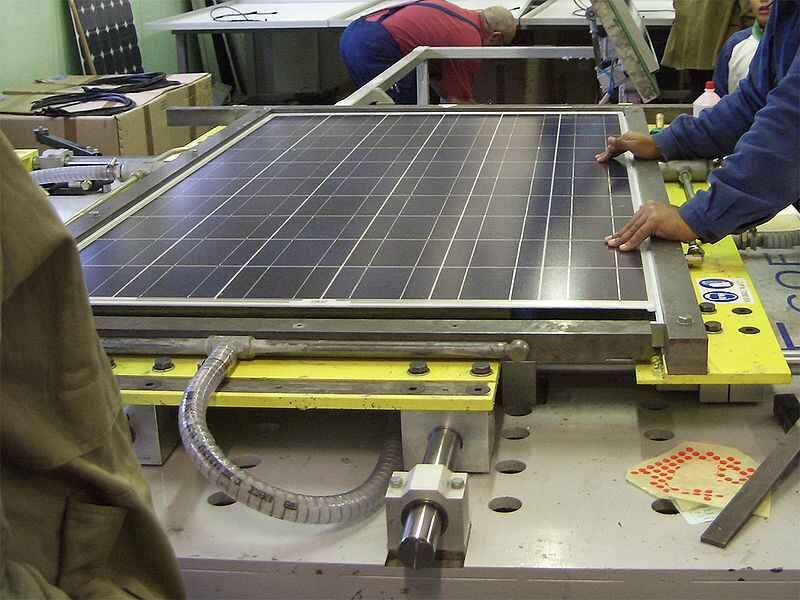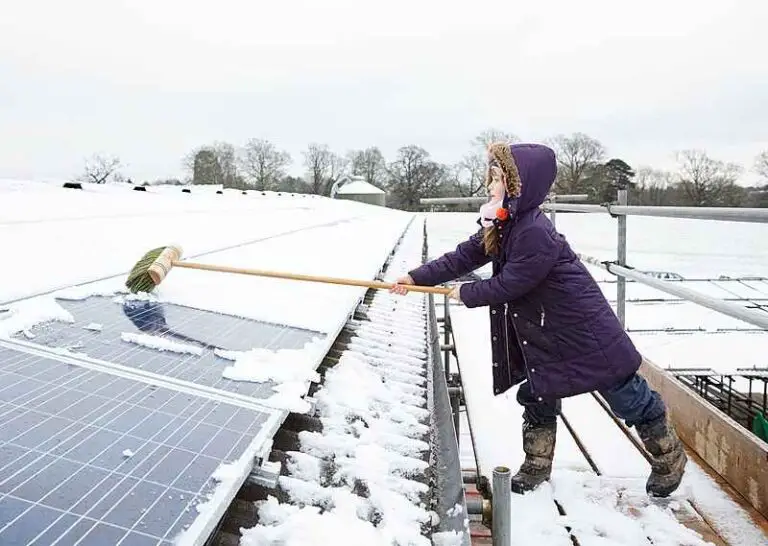7 Disadvantages of Solar Panels Explained
Disadvantages of solar panels are; capital cost, manufacturing and decommissioning-related pollution, weather dependence, efficiency challenges, storage limitations, space constraint and potential scarcity of raw materials.
This article discusses the disadvantages of solar panels, as follows;
1). Capital Cost (as one of the Disadvantages of Solar Panels)
One of the disadvantages of solar panels is the capital cost of purchase and installation of these devices.
Solar panel is not a high cost device compared to other energy technologies; however, purchasing and installing these devices can be fiscally demanding.
The cost of a solar panel is about $1.27 per watt of electricity generated, on the lower end [3]. This value can rise to $ 3.0 and above.
A 2000W (2kW) solar panel costs at least $ 2,540, and can reach $6,000 in some cases. On average, the cost of solar panels with significant production-capacity is $16,000 [1].
Asides the panel itself, capital cost also includes that of installation, which may involve external mounting-components and significant complexity, especially for large panels.
The most expensive part of a solar system is the battery for energy storage; which is yet another challenge as it makes storage of solar power expensive (while being necessary) and can limit the capacity of storage (by causing users to opt for low-capacity batteries that are affordable).
High capital cost is an indication of expensive raw materials and manufacturing process(s). The profit margin for solar energy technology is relatively low for manufacturers and vendors, due to these conditions.
Reducing the lifecycle cost of solar panels can be achieved through measures such as raw material-substitution (to cheaper alternatives) and improvement in battery technology [4].
2). Manufacturing and Decommissioning-Related Pollution
Although solar energy itself is renewable and clean, some stages in the lifecycle of solar panels can affect the environment adversely. These are namely the manufacturing and decommissioning or dismantling stages.
The manufacturing of solar panels affects the environment by releasing byproducts that can alter the physicochemical and biological (or abiotic and biotic) conditions.
Types of pollution that can result from the process of making solar panels include soil, water and air pollution.
Toxins and greenhouse gases can be released while using fossil fuels, heavy machinery and thermal processes, to extract and convert raw materials to solar panels.
These environmental impacts are particularly severe when unsustainable methods and materials are being used; thereby contradicting the objective of mitigating environmental impacts in the use of solar panels.
The decommissioning or dismantling of used solar panels can also affect the ecosystem negatively, especially in cases where the used panels or their components are disposed in landfills. Such negative effects can be mitigated through measures like recycling [2].

3). Weather Dependence (as one of the Disadvantages of Solar Panels)
Weather affects solar energy in terms of both its availability and magnitude, because the weather condition at any given time determines the amount of electromagnetic radiation that reaches the Earth's surface from the Sun.
What this implies is that the instantaneous productivity of a solar panel ultimately depends on the amount of solar radiation reaching the Earth's surface.
The weather condition under which solar panels work best is sunny, clear weather with minimal to no clouding. This partly explains why solar energy can be significantly productive in remote, desert areas.
Solar panels do not depend on temperature for their operation, but rather on energetic photons in visible light. Temperature affects solar panels when it is extreme, at which point it could cause physical or chemical impairment of the device.
Rain affects solar panels by temporarily decreasing their solar capture and productivity rates, although such precipitation also helps to remove dust and debris from the panels' surface and improve its performance. Extreme weather condition of any kind is likely to damage exposed solar panels.
The weather-dependence of solar panels is a challenge because it reduces their reliability and restricts their electricity generation to daytime hours with sufficient sunlight.
4). Efficiency Challenges
There is a limit to solar panel efficiency, meaning that PV cells do not successfully convert 100% of solar radiation that comes in contact with them. This is a major disadvantage that affects productivity of the panels.
The efficiency of a solar cell is limited because of various factors such as orientation, cell composition, and electron-dynamics; all of which lead to energy losses in the photoelectric process.
Solar panels having the lowest efficiency are often of the polycrystalline type; and this can be explained by the fact that these panels are characterized by irregularities in energy conversion rate across their surfaces. The energy efficiency of a polycrystalline solar panel rarely exceeds 15%.
Monocrystalline panels, as well as other innovative new types of solar capture devices may achieve higher efficiencies than polycrystalline cells, within the range of 15-20%.
Since panel efficiency is the sum-total of individual efficiencies of photovoltaic cells [5], improving solar panel performance is only possible through the introduction of improved PV cell technologies.
5). Storage Limitations (as one of the Disadvantages of Solar Panels)
Solar panel usage is faced with challenges of energy storage.
These challenges are very significant, especially considering the fact that solar panels do not generate electricity on a consistent basis, but rather depend on time of day and weather conditions.
The challenges of solar energy storage range from cost of storage system (battery) to efficiency, maintenance, space-requirement, capacity and compatibility with the solar panel(s) and other system components (like inverters).
Large-capacity batteries can be very helpful for solar panel usage, but come with additional cost, space requirement and maintenance, which can add to the complexity for users.
Solar energy storage is never 100% efficient, and this couples with the efficiency limitation of the solar panels to reduce the amount of usable power that is eventually delivered.
6). Space Constraint
Solar panels are space-intensive; meaning that they tend to occupy a significant area wherever they are installed.
In fact, the solar-capture capacity of these devices is directly proportional to their area, so that high power output requires more space to be occupied.
The amount of space taken up by solar panels may range from tens of square feet to thousands of square feet depending on the desired scale of power generation.
For large solar installations, the demand for space can be costly, because of the vast area that is usually covered by the panels.
To address this, concepts like agrivoltaics (installation of panels on agricultural land) and the use of degraded sites, are recommendable.

7). Potential Scarcity of Raw Materials (as one of the Disadvantages of Solar Panels)
Raw materials needed to make solar panels include; silicon, aluminum, indium and gallium.
While some of these like silicon are basically abundant on the Earth's surface, they are not necessarily abundant in the required grade or type that is used to make quality photovoltaic cells.
Rare elements like gallium used in some components of solar panels can become scarce, thereby affecting the rate of manufacture.
In turn, scarcity of raw materials can further increase the cost of solar panels and make them less-accessible to aspiring users. These issues are generally worsened by inadequate recycling of used panels.
Conclusion
Disadvantages of solar panels are;
1. Capital Cost
2. Manufacturing and Decommissioning-Related Pollution
3. Weather Dependence
4. Efficiency Challenges
5. Storage Limitations
6. Space Constraint
7. Potential Scarcity of Raw Materials
References
1). Brill, R. (2023). "How Much Do Solar Panels Cost?" Available at: https://www.forbes.com/home-improvement/solar/cost-of-solar-panels/. (Accessed 23 April 2023).
2). Chowdhury, S.; Rahman, S.; Chowdhury, T.; Nuthammachot, N.; Techato, K.; Akhtaruzzaman, Md.; Tiong, S. K.; Sopian, K. B.; Amin, N. (2020). "An overview of solar photovoltaic panels' end-of-life material recycling." Energy Strategy Reviews 27:100431. Available at: https://doi.org/10.1016/j.esr.2019.100431. (Accessed 23 April 2023).
3). Rahman, M.; Islam, A. K. M.; Salehin, S.; Al Matin, A. (2016). "Development of a Model for Techno-economic Assessment of a Stand-alone Off-grid Solar Photovoltaic System in Bangladesh." International Journal of Renewable Energy Research 6(1):1453-1461. Available at: https://www.researchgate.net/publication/291973733_Development_of_a_Model_for_Techno-economic_Assessment_of_a_Stand-alone_Off-grid_Solar_Photovoltaic_System_in_Bangladesh. (Accessed 23 April 2023).
4). Vartiainen, E.; Breyer, C.; Moser, D.; Roman, E. (2019). "Impact of weighted average cost of capital, capital expenditure, and other parameters on future utility‐scale PV levelised cost of electricity." Progress in Photovoltaics Research and Applications 28(6443). Available at: https://doi.org/10.1002/pip.3189. (Accessed 23 April 2023).
5). Zito, B. (2023). "The Most Efficient Types Of Solar Panels Of 2023." Available at: https://www.forbes.com/home-improvement/solar/most-efficient-solar-panels/. (Accessed 23 April 2023).

